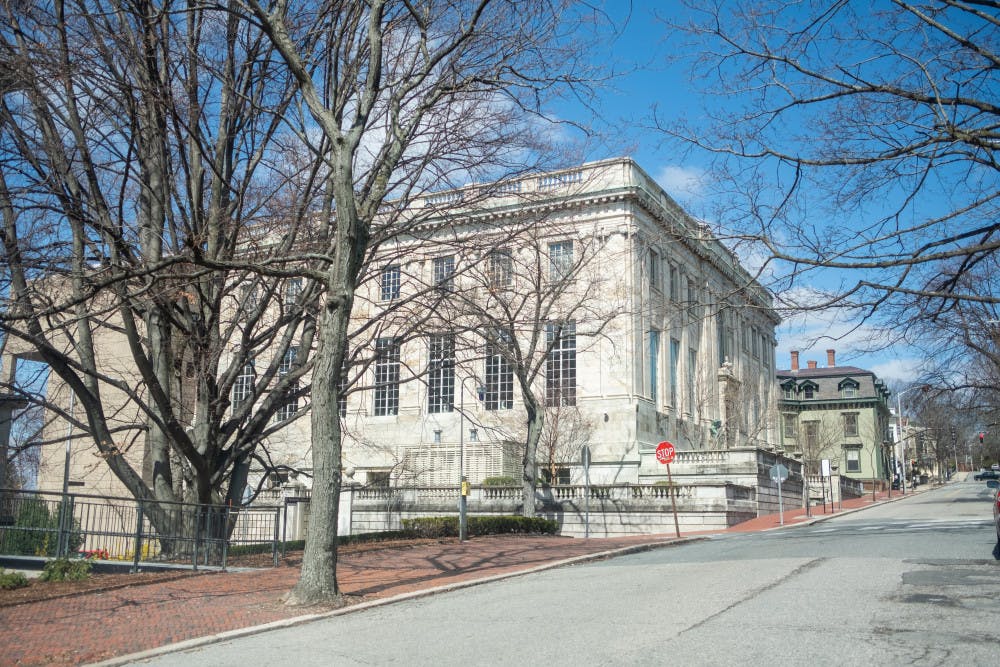Richard Bungiro PhD’99, senior lecturer in molecular microbiology and immunology, structures his course BIOL 0530: “Principles of Immunology” around pop culture themes. He challenges students to untangle the hypothetical immunological functions of a Terminator or a dragon. He has an antibody tattooed on his wrist. And he makes memes, which he posts on a Facebook page frequented by hundreds of his current and former students.
“What’s your favorite administrative euphemism for ‘global pandemic?’” Bungiro asked in one of his recent posts. “These trying times. These difficult times. These uncertain times. These challenging times. Protect the endowment at all times.”
He posted the meme to “Brown Dank Stash of Memes for S/NC Teens,” a Facebook page where over 20,000 members upload and interact with Brown-related meme content. Over the past four years, the page has become a cultural touchstone for students at Brown. Now, with campus closed as a result of the COVID-19 pandemic, the meme page has helped recreate community for students isolated in their homes. The memes themselves have become a form of communication, of transmitting meaning, that is uniquely suited to the digital existence the Brown community has adopted.
“I think people really want to feel like they’re part of a community,” Bungiro said. “Being on that page and some of the other ones, I think it’s a way for people to retain a little piece of what we’re all missing so much right now.”
Memes emerged as a cultural phenomenon in the early 2000s, taking the internet and college campuses alike by storm. The word “meme” was coined to describe elements of culture that propagate through society, particularly through imitation, and are stuck easily to humorous images created and shared through the internet.
“Right now this is one of the only public forums that Brown students have as a community,” said Lucy Duda ’20, a senior administrator of the page as well as a moderator of “The Ivy League Meme Consortium,” a similar Facebook page with over 100,000 members focused on Ivy League content. “We’ve really tried to make the meme page a space for public discourse in the community and a way for people to find common ground and bond over how terrible a lot of things have been.”
Duda became a moderator of Brown’s meme page in the fall of 2016, when the page only had a few hundred members. She has seen it grow ever since. In honor of the page hitting 20,000 members, Duda recently made a new cover photo reading “Brown Digital Space Main Green.”
Throughout the quarantine, memes have poked fun at decisions from the University administration and questioned, often sarcastically, whether students will return to campus this fall. There has also been an influx of more comical content, such as a group of cel-shaded bears dancing to Smash Mouth. Beneath those boogying bears and agitated students lie hundreds of comments of friends tagging each other and reaching out, despite distance and uncertainty, hoping to make each other laugh.
“The undertone is very much that things suck, but we can do this,” said Elliott Lehrer ’21, who has posted memes since he was accepted to Brown three years ago.
Hannah Kierszenbaum ’20, who spent her senior spring on College Hill with a few friends, said the meme page has helped keep her connected to the greater Brown community. “I relate to it and look at it more now that we’re in quarantine,” she said. “It is a subpar situation for everybody so it’s cathartic to know that other people are also struggling.”
These memes will endure beyond the pandemic. Researchers at the University are archiving them at the request of the administrative team behind Brown Dank Stash of Memes for S/NC Teens. Nationally, the Library of Congress is doing the same for other meme content.
John Fenn, contributor to the Library of Congress’ web archive and head of research and programs at the American Folklife Center, emphasized the communal power of this form of communication, which he defines as “narrative, visual communication, contemporary humor that arises out of a collective sense of something, even if it's not a collective experience.”
“It’s a fascinating kind of archaeology,” Fenn said. “It’s the archeology of right now.”
Andrew Majcher, head of digital services and records management in the John Hay Library, agreed with Fenn.
“Especially with the way the COVID crisis has been going, it’s one of the more poignant ways we can gauge how the student body is feeling about what’s going on,” Majcher said.
Majcher added that the meme page, along with other pages like “Poems from a University Quarantine,” might be included in a future University library project on digital documentation of the pandemic.
The lasting impact of the meme page has come as a surprise for Dylan Garcia ’20, who co-founded the meme group four years ago.
“At the beginning, I thought it was just going to be general memes,” Garcia said, who thought that around 2,000 members would join, one-tenth of its current following. He didn’t know that the page would end up “putting a voice on some issues.”
The typical end of the year atop College Hill is Spring Weekend, packed libraries, finals and a stately procession through the Van Wickle Gates. Not this year; no crowded moshes, no late nights in the Rock and Commencement was a half-hour online. Bungiro captured that transition and his feelings toward the community in a meme, composed of a photo of the gates above a photo of his orange couch at home.
“Not much snark or spicy in this meme, my friends — just sincere gratitude for the students of Brown,” the caption reads. “You matter, and you constantly remind me why it matters.”

ADVERTISEMENT




